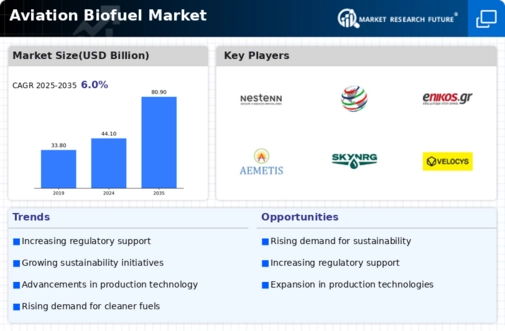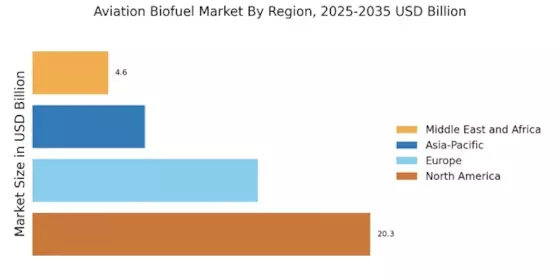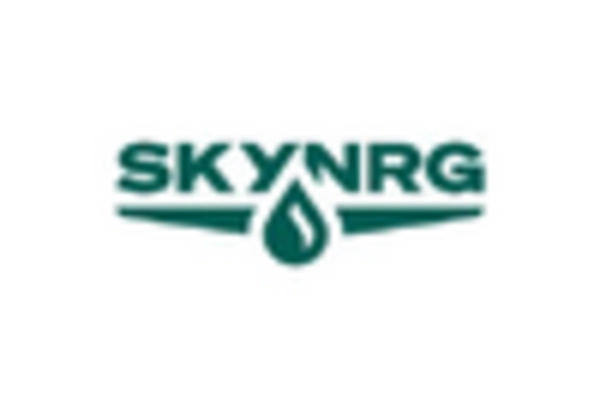Aviation Biofuel Market Summary
As per MRFR analysis, the Aviation Biofuel Market Size was estimated at 45.17 USD Billion in 2024. The Aviation Biofuel industry is projected to grow from 47.88 USD Billion in 2025 to 85.74 USD Billion by 2035, exhibiting a compound annual growth rate (CAGR) of 6.0 during the forecast period 2025 - 2035.
Key Market Trends & Highlights
The Aviation Biofuel Market is poised for substantial growth driven by technological advancements and regulatory support.
- Technological advancements in biofuel production are enhancing efficiency and reducing costs, particularly in the HEFA segment.
- North America remains the largest market for aviation biofuels, while the Asia-Pacific region is emerging as the fastest-growing market.
- The commercial segment continues to dominate the market, although the military segment is witnessing rapid growth due to increasing defense sustainability initiatives.
- Rising environmental concerns and government policies are key drivers propelling the adoption of aviation biofuels across the industry.
Market Size & Forecast
| 2024 Market Size | 45.17 (USD Billion) |
| 2035 Market Size | 85.74 (USD Billion) |
| CAGR (2025 - 2035) | 6.0% |
Major Players
Neste (FI), Gevo (US), LanzaTech (US), World Energy (US), Fulcrum BioEnergy (US), SkyNRG (NL), Sustainable Aviation Fuel (US), TotalEnergies (FR), Air BP (GB)


















Leave a Comment